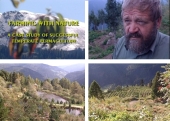Hi Wayne. Zach and Ben must've dug your pond right before they dug mine. I've done some light googlin and there aren't quite a whole ton of folks doing natural and organic crawfish just yet, although I've heard whispers of it catching on. I'm committed to figuring it out. Last night's youtube hole led me to
this here video. There's mention of rice for constantly-flooded land (and a variety called
ecrivisse in particular) and sorghum for ephemerally-wet land. I have forever wet ponds, so rice may be an option. The video says that right about now is the time to plant rice because it's just about too late in the growing season for it to go all the way to grain. I have to decide soon.
LSU has an
Austin alumni group. They hold their boil early May. I think that you'd be set up real nicely if you could break into the market with them. By the time their May boil comes around each year, they've probably had several hundred pounds shipped into town.
I gather that you initially seeded with some Native American Seed mix(es), as did I. If you are interested in figuring out the rest of it, let's put our heads together.








